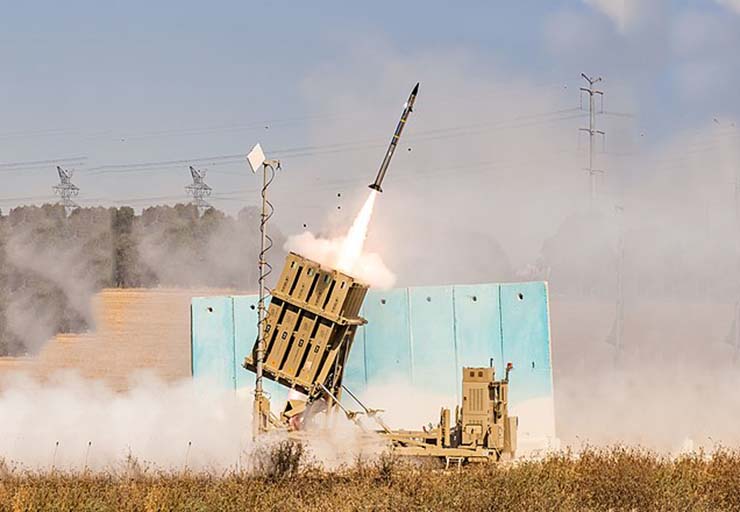
Tel Aviv: The massive use of different types of Iranian made UAVs by the Hezbollah in Lebanon in recent months will force Israel to adapt its sensors and air defence systems to deal with the threat.
Since the war broke out In Gaza on October 7 and the Hezbollah joining the operations on the Israeli northern border, this Lebanese Iran proxy is using a big number of UAVs. Some are just carrying optical payloads while others are armed. The small dimension and the low flying enable these UAVs in most cases to enter the Israeli airspace and cause damage and casualties.
The use of the existing air defence systems against this threat is a problem because using an interceptor the carries a very high price tag against this basic threat is a problem. That is the reason for the effort to find more effective and “economical” ways to deal with this growing threat.
According to an analysis written by Yehoshua Kalisky from the Israeli Institute for National Security Studies (INSS), the inherent advantage of unmanned aerial vehicles (UAVs)—manifested mainly in flexibility of operation, long activity time, and low cost—allows terrorists, particularly Hezbollah during the current campaign in the North, to use them as effective weapons for attack and intelligence-gathering purposes.
“As part of the fighting in the north, Hezbollah uses various types of UAVs for attacks, suicide attacks, and intelligence-gathering purposes. Israel’s air defence copes well with them, but sometimes the UAV’s advantages—slow flight speed at low altitude and low radar signature—“deceive” the detection and defence systems. As a result, and since there is never a hermetic defence, there are occasional infiltrations of UAVs into strategic sites, population concentrations, and military bases for intelligence or attack purposes. Furthermore, in the third week of February 2024, two UAVs infiltrated Israel and unexpectedly hit civilian targets without being detected at all,” writes Yehoshua Kalisky.
According to Kalisky, the UAVs used by the Hezbollah are mainly made in Iran or China, or they are self-made, based on Iranian know-how.
“The most prominent are the long-range attack UAVs (2,000 km) that are capable of staying in the air for a considerable amount of time, such as the Shahed 101, 129, 136 and others that have the capacity to carry loads of up to 150 kg. Hezbollah also has suicide UAVs based on the Ababil 2T model, which carries a 20–40 kg warhead, or its upgraded version, the Mirsad 1, which has an extensive attack range and the ability to carry large explosives.”
The analyst says that in addition, Hezbollah has the Ayoub or Mirsad 2 UAVs, which are used for visual and electronic intelligence gathering or for baiting and saturating the detection and attack systems. It is important to remember that the Iranians also have stealth UAVs, and they have also announced the implementation of long-range UAVs that have jet engines. It’s possible that these tools will appear in the battlefield in the future or in a multi-arena conflict.
“Without giving away useful information, a possible solution to the situation is to upgrade the electromagnetic and digital dimension and integrate it into appropriate AI systems,” emphasises Kalisky.















